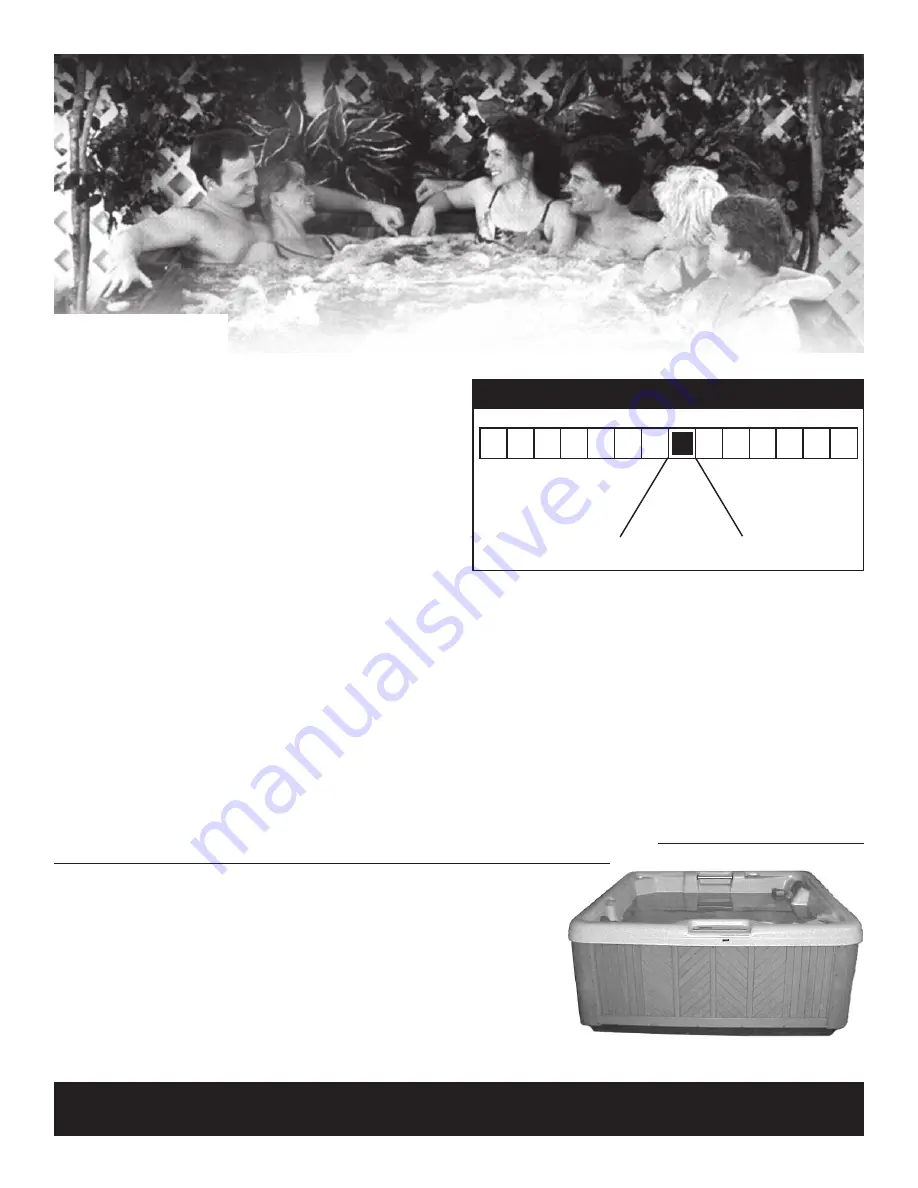
From time to time it will be necessary to clean the exposed surface areas of your spa shell and cabinet. Do not use cleaners or compounds
that contain harsh abrasives or caustic chemicals. Avoid using rubbing or buffing compounds.
Water Marks On Spa Shell
Water marks on the spa shell are best removed by applying a commercially available alcohol based window
washing compound such as plain Windex to a soft rag or paper towel and wiping the surface in a circular
motion.
Removing Tub Ring
Tub ring is best removed with a specialized commercially available cleaner such as Sun Surface Cleaner.
Ask your local dealer for recommendations. Always apply with a soft wet sponge or paper towel.
Cleaning The Spa Cabinet
Use a mild dish detergent diluted with tap water and applied with a soft wet sponge or paper towel to clean the spa cabinet. Never use abrasive or caustic compounds.
Do not use cleaners or compounds that contain harsh abrasives or caustic chemicals.
Avoid using rubbing or buffing compounds.
CLEANING THE SPA
pH
pH is the measure of the degree of pH acidity or alkalinity of pool water.
Practically speaking, it tells if water is neutral or how far away from neutral.
pH is a measure on a scale, to which numbers have been assigned,
from 1 to 14. Seven is the middle of the scale and is considered exactly
neutral. Readings below 7 are increasingly acidic, above 7 are
increasingly basic or alkaline. Under normal conditions, it has been found
that the proper pH for spa water is approximately 7.5 with pH 7.2-7.7
being an acceptable range. The chart to the right indicates different
tendencies at assigned pH readings and what chemical to add.
Total Alkalinity
Alkalinity represents the amount of alkaline minerals in water. It is the
measure of the buffering capacity or resistance to a change in pH of water.
It minimizes changes in pH, making pH easier to control. Alkalinity and pH
are sometimes confused. pH is a measure of DEGREE of acidity of water.
Alkalinity is a QUANTITATIVE measure, telling you the total amount or
quantity of alkaline minerals present. The proper alkalinity range is 80-120
ppm. If alkalinity is allowed to drift, corrosion or scaling may result. Have
your spa water tested periodically for alkalinity by a qualified dealer.
Calcium Hardness
Total Hardness is used to describe the total amount of dissolved calcium
and magnesium bicarbonates, as well as smaller quantities of other
minerals in water. Unbalanced water, high in hardness, can cause water
to become cloudy. Scale can form inside pipes restricting water flow and
reducing their efficiency. Scale can also discolor a spa's interior. On the
other hand, low hardness and unbalanced water can contribute to corrosive
water conditions. Therefore, a certain amount of hardness is desirable.
The desired range is between 100-200 ppm. Once again, your water should
be tested periodically for hardness.
pH SCALE
0
1
2
3
4
5
6
7
8
9
10
11
12
13
ACIDIC
pH Too Low corrosive
Chlorine Lost
Irritating
ALKALINE
pH Too High
Scale Forming
Chlorine Ineffective
Irritating
ADD pH+
ADD pH-
COMFORT ZONE
7.2
7.8
NEUTRAL
pH ideal
Non-corrosive, Max.
Chlorine Efficiency
Water Balance Is Critical
Unlike ordinary drinking water, spa water is held captive in your spa and is used over and over. All water contains minerals, metals and other dissolved
solids. In the case of spa water, these materials tend to concentrate due to normal usage and evaporation. Therefore, it is critical that you test and treat
your spa water to maintain proper balance.
19
Summary of Contents for Genius G-2.5
Page 22: ...000798 10 04...
























